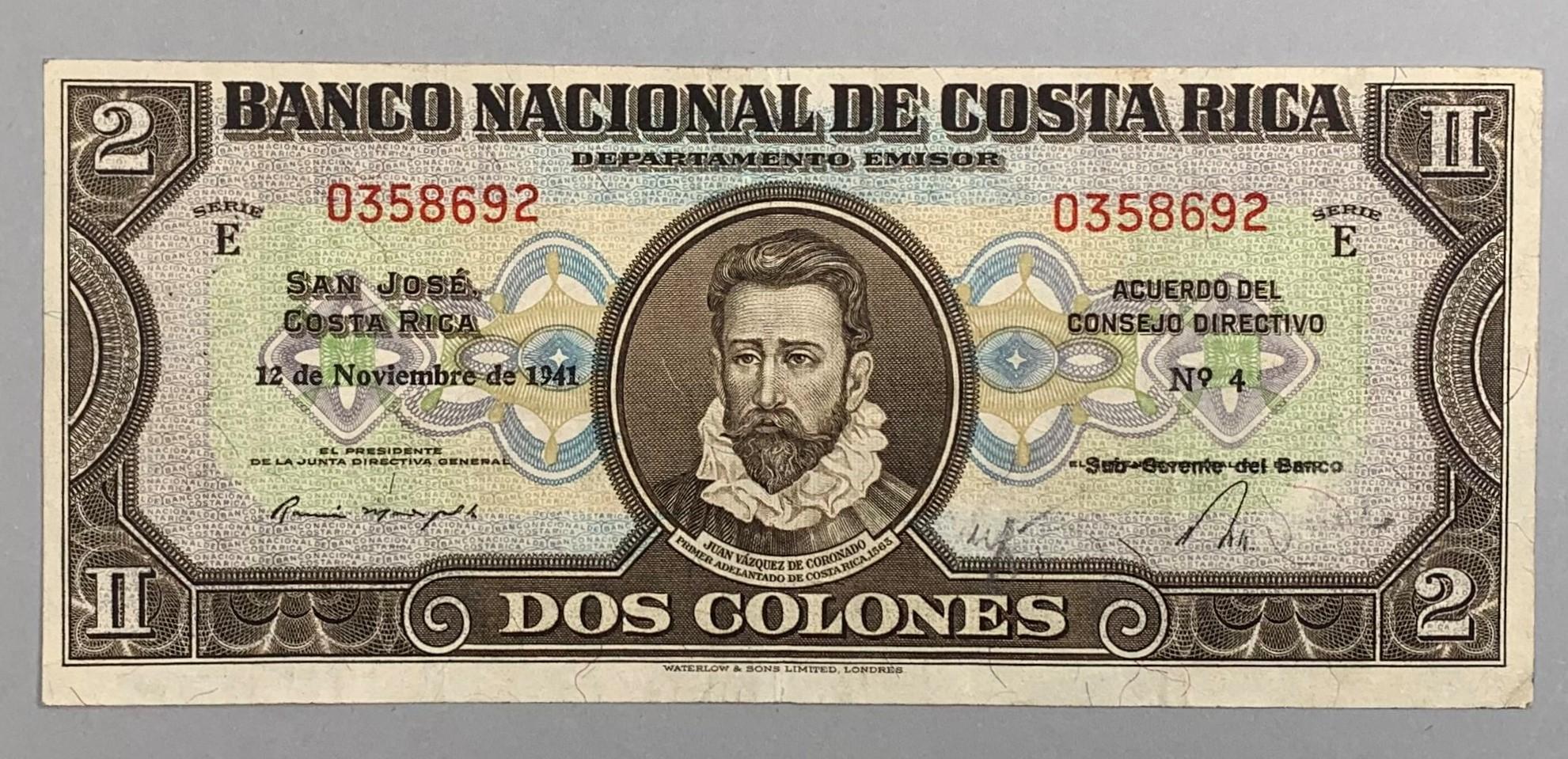Hispanic Heritage Month: Colombian Money
September 1, 2022
This month’s featured Artifact of the Month is a Costa Rican two-colón note from 1941 (1993.003.033). The front of the bill is mainly brown on a multi-colored background made up of a pattern that reads “BANCO NACIONAL DE COSTA RICA” which translates to “National Bank of Costa Rica.” The bill is titled “Banco Nacional de Costa Rica Departamento Emisor” and “Dos Colones” between which there is a three-quarter bust portrait of Juan Vázquez de Coronado that is captioned with his name and the assignation of “Primer Adelantado de Costa Rica, 1565.” This note was printed by Waterlow & Sons Ltd. of London on November 12, 1941, on behalf of the Costa Rican National Bank’s issuing department. The recto of the bill also includes the serial number and letter, the capital of Costa Rica, and the signatures of the bank’s president of the board of directors and the assistant manager (instead of the general manager). The back of the bill carries the same titles as the front but is dominated by a group portrait in the center, captioned “Rescate de Dulcehe en Quepos por Juan Vázquez de Coronado — 1563 Oleo de Tomás Povedano.” This translates to “The Rescue of Dulcehé in Quepos by Juan Vázquez de Coronado — 1563 Oil painting by Tomás Povedano” and describes a group of eleven Indigenous Americans, five Spaniards, one monk, and a horse.
The work is based on an unfinished oil painting by Tomás Povedano, a Spanish-born artist of the nineteenth and twentieth centuries. Povedano moved from Spain to South America where he learned about indigenous American culture and became inspired by it. He worked in Ecuador and Mexico before settling in Costa Rica where many of his paintings became the basis of the engravings used for the country’s currency. Because of Povenado’s interest in Costa Rica’s pre-Columbian and colonial history, he painted the scene based on in the rescue of Dulcehé, a Quepo princess, from the Coctu tribe and the intervention of the first governor of Costa Rica, Juan Vázquez de Coronado. The oil painting, however, was incomplete when it was sent to the printing house. In order to have a complete composition for printing, the engraver drew in the remaining background figures as well as changed some elements of proportion and position for better composition in terms of small-scale printing. The Banco Nacional, a private bank, printed paper currency for Costa Rica between the years 1937 and 1949 before being replaced by the Central Bank of Costa Rica in 1950.
Category: Archival Materials
Region of Origin: Latin America
Keywords:
Currency

